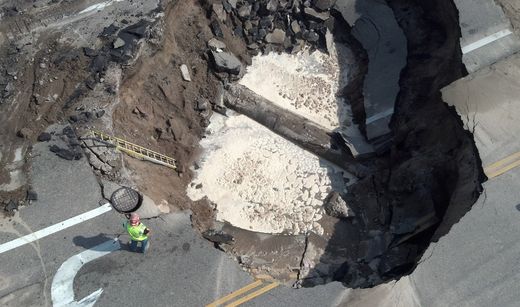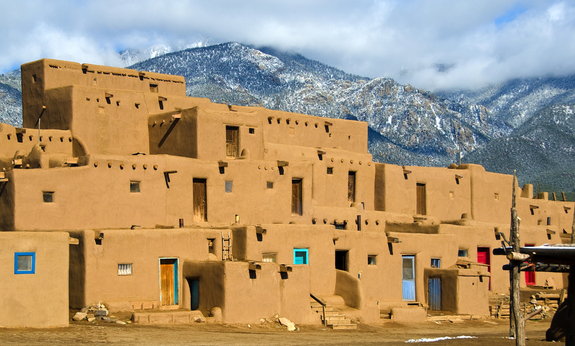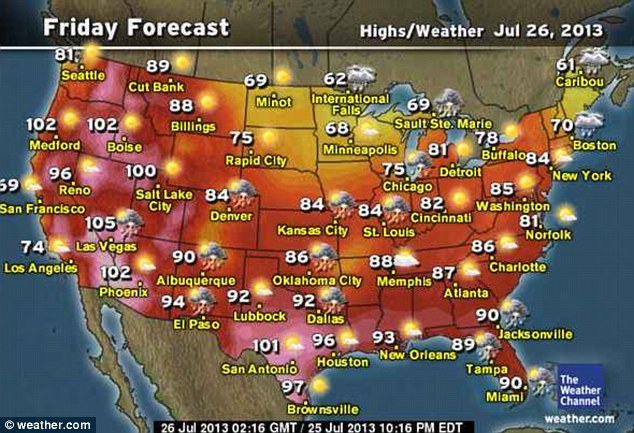
Some big hole: An aerial view several days after the water main break in the heart of Robbinsdale.
.
On the morning of June 22, the bottom of a 36-inch water main in the heart of Robbinsdale burst, peeling back several feet of concrete-coated steel pipe like a can of sardines.
Over the next 40 minutes, an estimated 600,000 gallons of water blasted downward, creating a hole 20 feet deep at the city's busiest intersection.
"This is your worst nightmare," said Crystal City Engineer Tom Mathisen, who supervised the repairs. "It's always kind of hair-pulling, but yet, because we do this kind of stuff all of the time, there's a process to do it."
The complete repair and reconstruction of the giant Robbinsdale Sinkhole was finished in three weeks, an impressive feat considering the magnitude and complexity of the damage. Water gushing from the broken water main bored down 10 feet and destroyed a sanitary sewer line, which filled with sand and dirt. Then water, dirt and debris churned upward, taking out a storm sewer pipe that sat less than a foot above the water main.
The water continued to drive toward the surface, and eventually popped off several manhole covers, flooding the intersection of 42nd Avenue (County Rd. 9) and Bottineau Boulevard (Hwy. 81) around 10 a.m. In a stroke of luck, a nearby gas line was unscathed and no one was injured.
"I certainly have to commend the [various public works departments] for how quickly they turned the water off ... and then repaired it," said Robbinsdale Mayor Regan Murphy. "It was an amazing response - I mean, it was a 20-foot hole, and they had [Hwy. 81] open in two weeks,"
The repairs were especially tricky because the water main takes two slight turns near the break, one at a 45-degree angle and one at a 12-degree angle. The bends had to be replaced with custom piping, which was trucked in overnight from Dayton, Ohio.
"Thirty-six-inch ductile iron pipe is not something you just keep on your shelf," said Mathisen.
There was speculation that the blowout was related to the severe weather that ripped through the Twin Cities June 21-22, but city officials say that the break was probably a result of a leak that slowly built for years. Mathison pointed out clusters of pinholes around the spot where the 50-year-old pipe burst as evidence of it weakening over time.


Comment: Backwards U.S. storm: Kansas lashed by 100 mph winds, and soft-ball size hail
Earthchanges: Unusual storm system moves backwards across continental U.S.